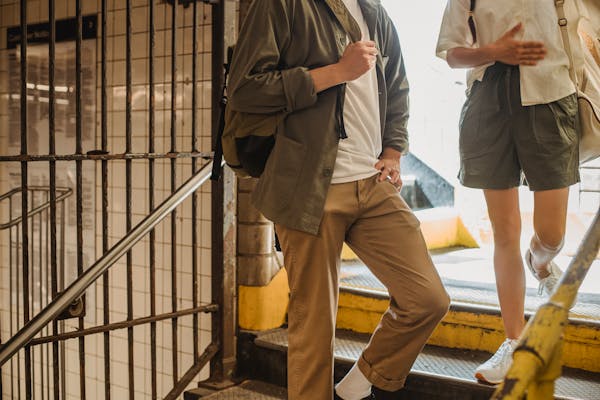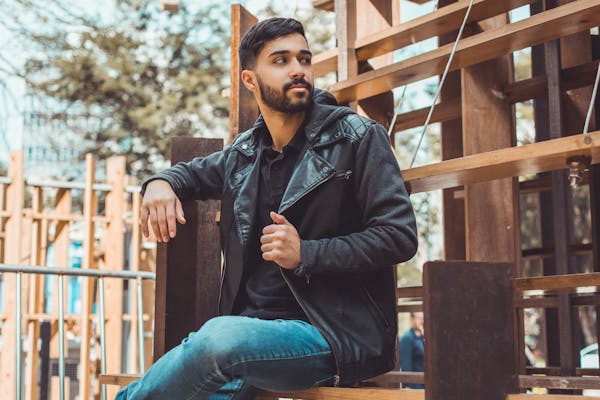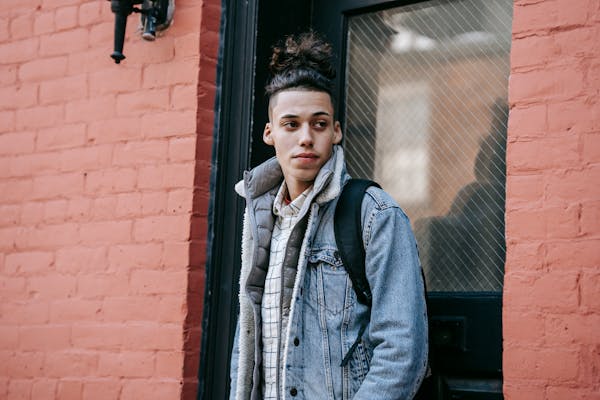
Table of Contents
Introduction to Trendy Men’s Wear
Formal wear in men has always epitomized grace, professionalism, and suave. With the changing times, formal wear is changing too.
The purpose of this blog is to delve into the latest trends of wear in men and glean from that what the contemporary men need to do to be fashionable and relevant.
Historical Perspective on Trendy Men’s Wear
Across the centuries, men’s formal wear has been much altered. From the ornate style of the Victorian period to the lean suits of the 20th century, each age has made its indelible mark.
At the beginning of the 1900s came the classic three-piece suit; in the 1960s came slim cuts and more casual looks. It is from such understanding that we get the flavor of the current trends today and how fashion is always cyclical.
Victorian-era formal wear for men had long frock coats, waistcoats, and top hats; it was an age of highly structured and ornamented style. Moving into the early 20th century, favor shifted to the lounge suit—a change towards practicality and the less ornate.
The mid-20th century gave way to looser styles, and by the 1960s, dramatic changes had been made as fashion became more experimental, leading to slim, lean cuts and an emphasis on expression.
The Key Features of Contemporary Trendy Men’s Wear
In order to understand the modern trends properly, it is necessary to deconstruct the most basic elements of formal wear for men:
Suits: Other than various cuts and styles, from the classic single-breasted to the modern double-breasted, one finds slim-fit ones that exude sleekness and smartness.
Colors are much more vibrant these days, from the traditional black, navy, and gray to the boldest hues like burgundy and emerald green.
Today, fabrics are not as they used to be; comfort and sustainability are the drivers of trends in weaves of wool, linen, and synthetic fibers that ensure breathability and flexibility.
Shirts: The trend in shirts is that of high quality fabrics, such as Egyptian cotton. Slim and tailored fits are the most predominant ones, with a comeback of patterns like pinstripes and checks.
White shirts are always a classic but are complemented with a more prevailing trend towards pastels and muted tones.
Modern trends imbibe functionality such as moisture-wicking fabrics that wick away sweat or non-iron shirts that stay crisp all day.
Ties and Bow Ties: Where ties are a classic inclusion, bow ties are back in town. Trends reach out to bolder patterns and textures, moving into paisley and knitted fabrics. What exhudes class is the act of matching ties with pocket squares.
Even the width of the ties changes with present trends, where they could be narrow or wide, depending on the overall style statement.
Shoes: Oxford and Derby shoes remain timeless choices, though loafers and monk straps really gain a lot of points these days, seeing how they are both formal and comfortable.
Leather still rules with greater attention paid to good craft. Color options expanded into several shades of brown, burgundy, and even blue—so much more leeway when styling the outfit formally.
Accessories: raise formal wear to a whole new level. Pocket squares, cufflinks, watches, and belts are a must. Trends are toward minimalist high-quality elements that add elegance rather than overload the attire.
The usual choices are leather belts with simple buckles, classic wristwatches, and subtle cuff links in silver and gold. Statement pieces, like tie clips and lapel pins, bring a flair of individuality into the traditional formal wear.
Current Trends in Trendy Men’s Wear
Sustainable and Eco-Friendly Fabrics
A highly emerging trend in the fashion world is sustainability. The focus of formal wear nowadays is on eco-friendly fabrics like organic cotton, linen, and recycled material.
Brands become more and more transparent about their sourcing and manufacturing, providing the environment-conscious customer peace of mind.
Patagonia and Minimalist are at the head of the sustainable fashion movement, exhibiting that using environmentally-friendly materials doesn’t have to sacrifice style and durability.
Bold Colors and Patterns
Neutral shades are a thing of the past; burgundy, teal, and mustard are now in vogue in men’s formal dressing. Even checks, plaids, and florals are increasingly donned in formal clothing to break the monotony of neutrals.
And this trend is but a reflection of the larger sociopolitical change seen in dressing and expressions of individual personality and self.
Formal with a Bit of Casual
It is erasing the line that separates casual and formal wear. Men are embracing formal pieces and mixing them with casual items to create an outfit that works for any kind of setting. For instance, consider wearing a cut blazer with chinos or a suit with a t-shirt.
This style characterizes relaxed, modern formal wear. It is what lets men be fashionably comfortable everywhere, from the boardroom to social gatherings.
Tailored Fits In Trendy Men’s Wear
When it comes to formal wear, one puts a premium on clothing fit. Tailor-made delivers a great fit that flatters the figure of any wearer.
Ready-to-wear options do come in handy, but the trend is more into tailored, made-to-measure attire for a premium fit and comfort.
Tailor-made bespoke services, once reserved only for the elite, are fast gaining accessibility to the general populace, breaking barriers, and enabling more men to enjoy perfectly fitted clothes.

Statement Accessories
Accessories are looked upon as statement makers. From bold cuff links and pocket squares to stylish watches, they have different statements to make.
Experiments with lapel pins, tie bars, and patterned socks are also common ways for men to add a dash of individuality to their ensembles. The key is to pick up accessories that complement the overall look and not overpower them.
Seasonal Trends in Trendy Men’s Wear
Spring/Summer Trends
In spring and summer, lighter-colored fabrics and lighter colors in general should be followed. Linen and cotton suits can be a great deal because of their breathability. Pastel shades, light gray, and beige come in color tones.
Shirts should be short-sleeved, and blazers should not be painfully structured to give more comfort yet keep sharp. These trends focus on comfort due to the warm seasons without compromising on a smart, professional outlook.
Fall/Winter Trends
Fall and winter trends are focused on heavier fabrics like wool and tweed. Darker hues such as navy, charcoal, and forest green are preferred. Layering is the key, with vests, overcoats, and scarves that help add warmth and style.
Textured fabrics like corduroy and flannel are in vogue. This season’s trends drive home the fact that one needs to stay warm without appearing dowdy, mainly through layered looks that exude practicality and elegance.

Factors Affecting Trends in Trendy Men’s Wear
Celebrity Influence
Another major influence of fashion trends is celebrities. Stars like David Beckham, Ryan Gosling are often vocal in setting new trends for formal wear.
Their looks at red carpet events and other public appearances make many men want to try out new looks in formal wear. It is further amplified by celebrity endorsements and collaborations with fashion brands which greatly enable consumers to replicate the trend.
Fashion Shows and Designers
High-end fashion designers and their catwalks set the tone for formal wear. Leaders in this industry are Tom Ford, Giorgio Armani, and Burberry.
The latest catwalk shows indicate that it appears that classic elegance has been revisited with some modern twists such as innovative fabrics and color mixes that surprise.
They not only set the tone for the upcoming seasons but also inspire more affordable brands to remake the same styles for a broader audience.
Cultural and Social Influences
Cultural shifts and social movements also do their part in influencing formal wear. With the rise of remote work, formality has been eased a lot.
From the influences on social media platforms like Instagram and Pinterest to providing endless inspirations, it becomes easier for men to explore new trends and follow them. The growing focus on inclusivity and diversity in fashion is formal wear, widening the breadth in styles and sizes.
How to Keep Up with Trends in Trendy Men’s Wear
Staying ahead of the trends is all about continuing your learning and getting inspiration. Here are some tips:
Follow fashion blogs and magazines: publications such as GQ, Esquire, and Men’s Health keep you up to date regarding men’s fashion. While open to individual taste and preference, they give insight from experts and real-world applications on how to tackle new trends in your wardrobe.
Social Media: Start following a few fashion influencers and designers on Instagram or Pinterest to help kick-start you with inspiration daily. Social media becomes quite useful when it comes to finding new styles and getting inspiration from others who wear the latest trends.
Fashion Shows: Stream the runway shows online, and the reviews will keep you a step ahead of what’s in fashion. Many weeks of fashion have live streams of the shows; due to this, now one can get an insight into high-end fashion from anywhere in the world.
Shopping Apps and Sites: Browse through Mr Porter, ASOS, or Zara for new collections and trends. Quite often, they have filtered sections on new trends, where budget fashion is easy to find.
Conclusion on Trendy Men’s Wear
Historically, modern developments, and cultural shifts all imprint on formal wear for men. Today, sustainability, bold choices, and personalized fits are current trends in men’s clothes that give them a chance to express individuality without really losing an air of sophistication.
The changes are quite easy to keep abreast of and relatively easy to be open to new ideas regarding incorporating these trends into a man’s wardrobe.

